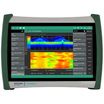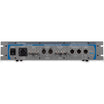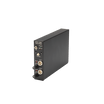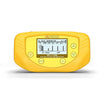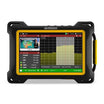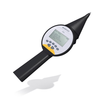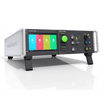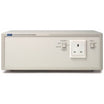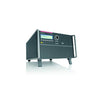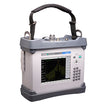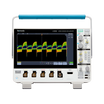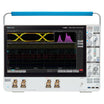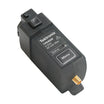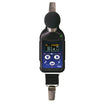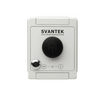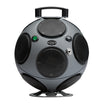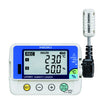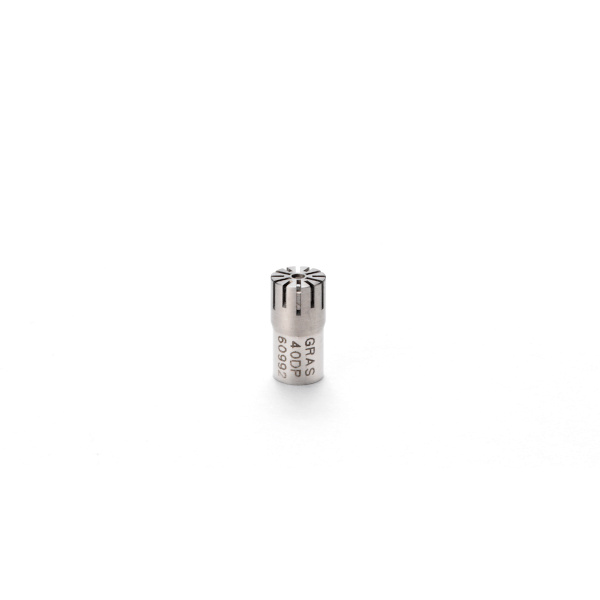
GRAS 40DP 1/8" Ext. Polarized Pressure Microphone
Use our chat for personal support or contact us via +45 31 33 18 19 or salg@GOmeasure.dk
The 40DP has a low sensitivity making it perfect for sound measurements at high frequencies and very high level pressure. The low sensitivity, together with the wide frequency response, makes the 40DP very suitable for impulse noises.
Discover the possibilities
More information
Description
GRAS 40DP 1/8" Ext. Polarized Pressure Microphone
Introduction
The 40DP is an IEC 61094 1/8” externally polarized pressure microphone with rear-venting. Read about the prepolarized equivalent GRAS 40DD.It is a high-precision condenser microphone made according to IEC 61094-4 requirements. Due to its tiny size, it can be used to measure very high frequency sounds without disturbing the sound field. It can measure sound pressure levels up to 174 dB in the range of 6.5 Hz to 140 kHz.
40DP is individually factory-calibrated and delivered with a calibration chart stating its specific open-circuit sensitivity and pressure frequency response.
Typical applications and use
The 40DP has a low sensitivity making it perfect for sound measurements at high frequencies and very high level pressure. The low sensitivity, together with the wide frequency response, makes the 40DP very suitable for impulse noises.The 40DP can be used for making acoustic measurements in laminar airflow by mounting the RA0173 1/8” Nosecone in place of the microphone grid. The nosecone tip should be point upstream in a laminar flow to reduce the turbulence created by the microphone itself in the airflow.
Compatibility
The 40DP must be used with an adapter for mounting a 1/8” microphone onto a 1/4” preamplifier.System verification
For daily verification and check of your measurement setup, we recommend using a calibrator like GRAS Sound Level Calibrator GRAS 42AG.For proper sensitivity calibration, we recommend using a pistonphone like GRAS Intelligent Pistonphone GRAS 42AP.
Calibration
When leaving the factory, all GRAS microphones have been calibrated in a controlled laboratory environment using traceable calibration equipment. Depending on the use, measurement environment and internal quality control programs we recommend that the microphone is recalibrated at least once a year.We offer two kinds of calibration as an optional after-sales service: GRAS Traceable Calibration and GRAS Accredited Calibration.
GRAS Traceable Calibration is a traceable calibration performed by trained personnel under controlled conditions according to established procedures and standards. This is identical to the rigorous calibration that all GRAS microphones are subjected to as an integral part of our quality assurance.
GRAS Accredited Calibration is performed by the GRAS Accredited Calibration Laboratory that has been accredited in accordance with ISO 17025 by DANAK, the Danish Accreditation Fund.
If you want a new microphone set delivered with an accredited calibration in stead of the default factory calibration, specify this when ordering.
Learn more at gras/calib.
Quality and warranty
All GRAS microphones are made of high-quality materials that will ensure life-long stability and robustness. The microphones are all assembled in verified clean-room environments by skilled and dedicated operators with many years of expertise in this field.The microphone diaphragm, body, and improved protection grid are made of high-grade stainless steel, which makes the microphone resistant to physical damage, as well as corrosion caused by aggressive air or gasses.
This, combined with the reinforced gold-plated microphone terminal which guarantees a highly reliable connection, enables GRAS to offer 5 years warranty against defective materials and workmanship.
Service
If you accidentally damage the diaphragm on a GRAS microphone, we can — in most cases — replace it at a very reasonable cost and with a short turn-around time. This not only protects your investment, but also pleases your quality assurance department because you don’t have to worry about new serial numbers, etc.Specifications
Documents
GRAS 40DP 1/8" Ext. Polarized Pressure Microphone
GRAS 40DP 1/8" Ext. Polarized Pressure Microphone datasheetOptions
Video
GRAS 40DP 1/8" Ext. Polarized Pressure Microphone
Introduction
The 40DP is an IEC 61094 1/8” externally polarized pressure microphone with rear-venting. Read about the prepolarized equivalent GRAS 40DD.It is a high-precision condenser microphone made according to IEC 61094-4 requirements. Due to its tiny size, it can be used to measure very high frequency sounds without disturbing the sound field. It can measure sound pressure levels up to 174 dB in the range of 6.5 Hz to 140 kHz.
40DP is individually factory-calibrated and delivered with a calibration chart stating its specific open-circuit sensitivity and pressure frequency response.
Typical applications and use
The 40DP has a low sensitivity making it perfect for sound measurements at high frequencies and very high level pressure. The low sensitivity, together with the wide frequency response, makes the 40DP very suitable for impulse noises.The 40DP can be used for making acoustic measurements in laminar airflow by mounting the RA0173 1/8” Nosecone in place of the microphone grid. The nosecone tip should be point upstream in a laminar flow to reduce the turbulence created by the microphone itself in the airflow.
Compatibility
The 40DP must be used with an adapter for mounting a 1/8” microphone onto a 1/4” preamplifier.System verification
For daily verification and check of your measurement setup, we recommend using a calibrator like GRAS Sound Level Calibrator GRAS 42AG.For proper sensitivity calibration, we recommend using a pistonphone like GRAS Intelligent Pistonphone GRAS 42AP.
Calibration
When leaving the factory, all GRAS microphones have been calibrated in a controlled laboratory environment using traceable calibration equipment. Depending on the use, measurement environment and internal quality control programs we recommend that the microphone is recalibrated at least once a year.We offer two kinds of calibration as an optional after-sales service: GRAS Traceable Calibration and GRAS Accredited Calibration.
GRAS Traceable Calibration is a traceable calibration performed by trained personnel under controlled conditions according to established procedures and standards. This is identical to the rigorous calibration that all GRAS microphones are subjected to as an integral part of our quality assurance.
GRAS Accredited Calibration is performed by the GRAS Accredited Calibration Laboratory that has been accredited in accordance with ISO 17025 by DANAK, the Danish Accreditation Fund.
If you want a new microphone set delivered with an accredited calibration in stead of the default factory calibration, specify this when ordering.
Learn more at gras/calib.
Quality and warranty
All GRAS microphones are made of high-quality materials that will ensure life-long stability and robustness. The microphones are all assembled in verified clean-room environments by skilled and dedicated operators with many years of expertise in this field.The microphone diaphragm, body, and improved protection grid are made of high-grade stainless steel, which makes the microphone resistant to physical damage, as well as corrosion caused by aggressive air or gasses.
This, combined with the reinforced gold-plated microphone terminal which guarantees a highly reliable connection, enables GRAS to offer 5 years warranty against defective materials and workmanship.

